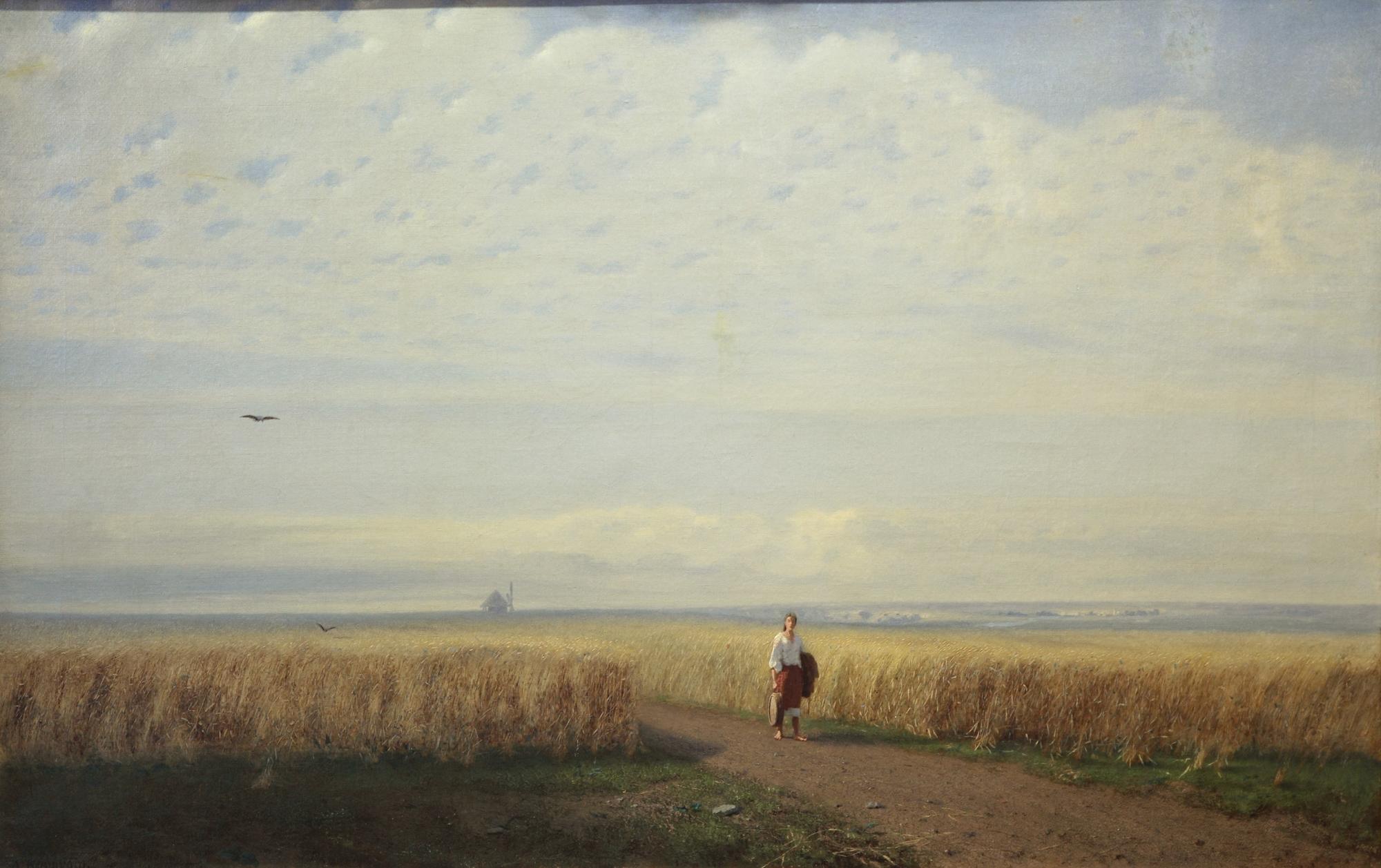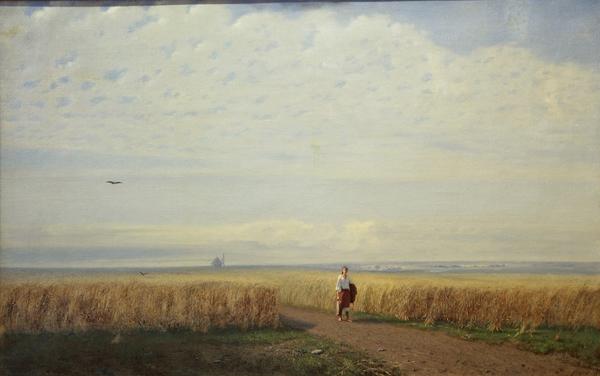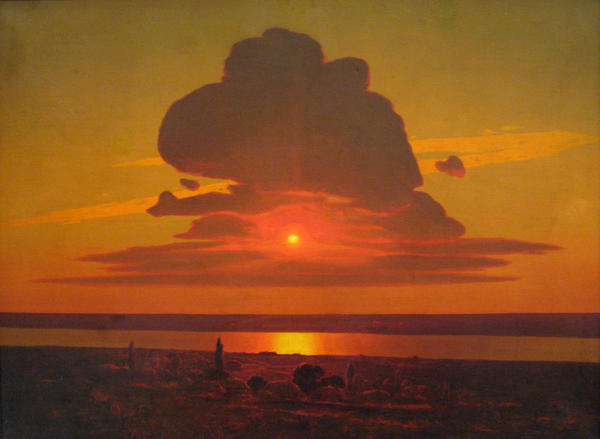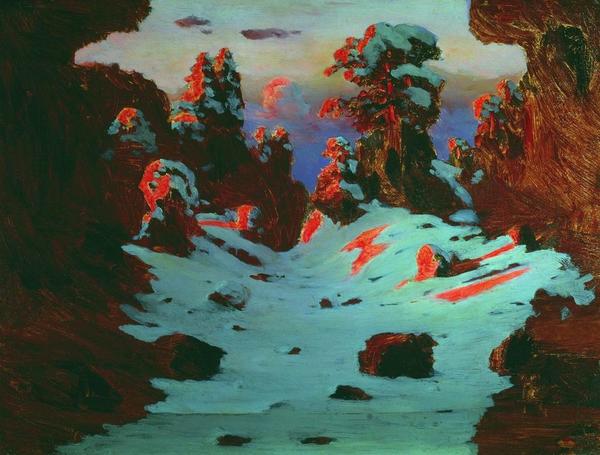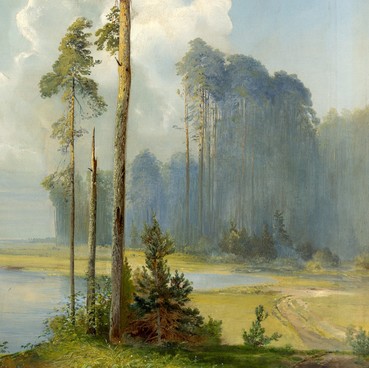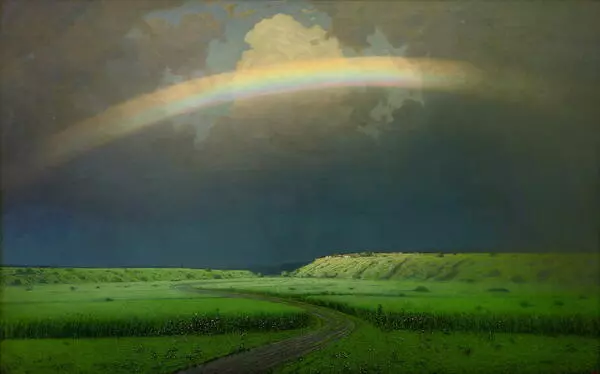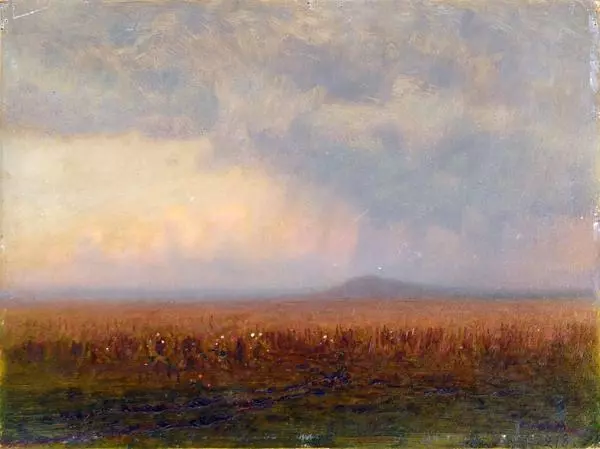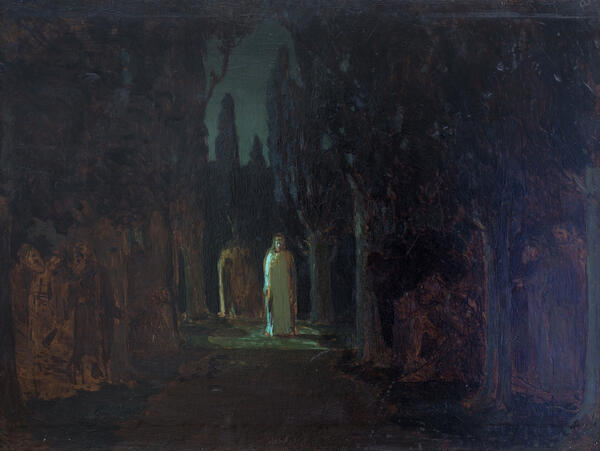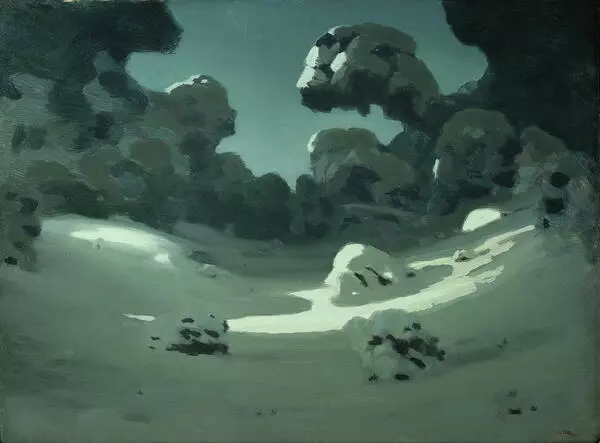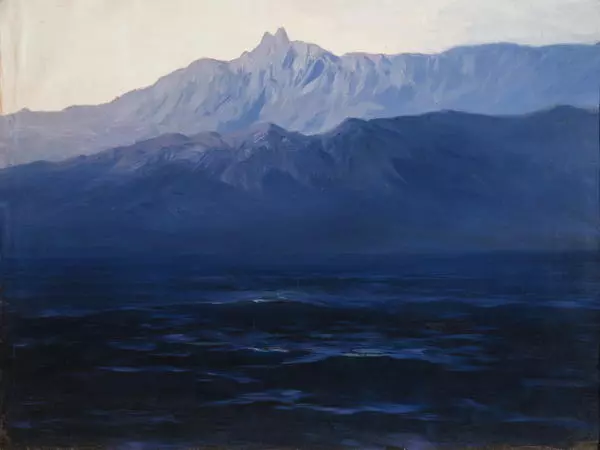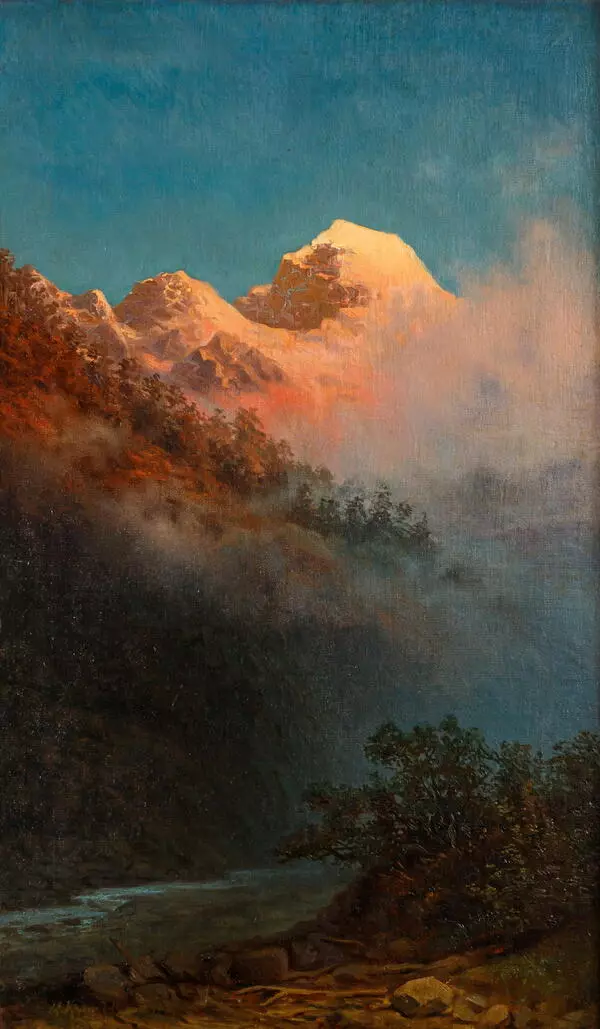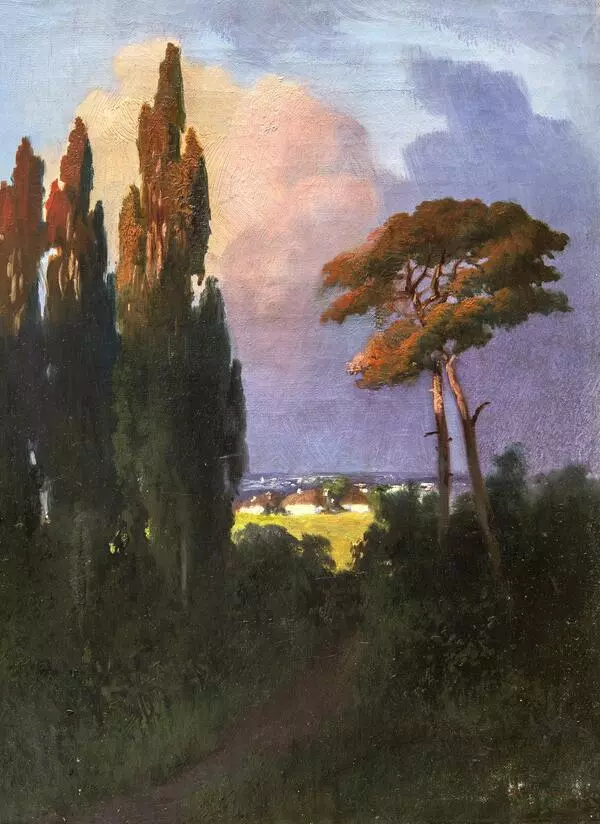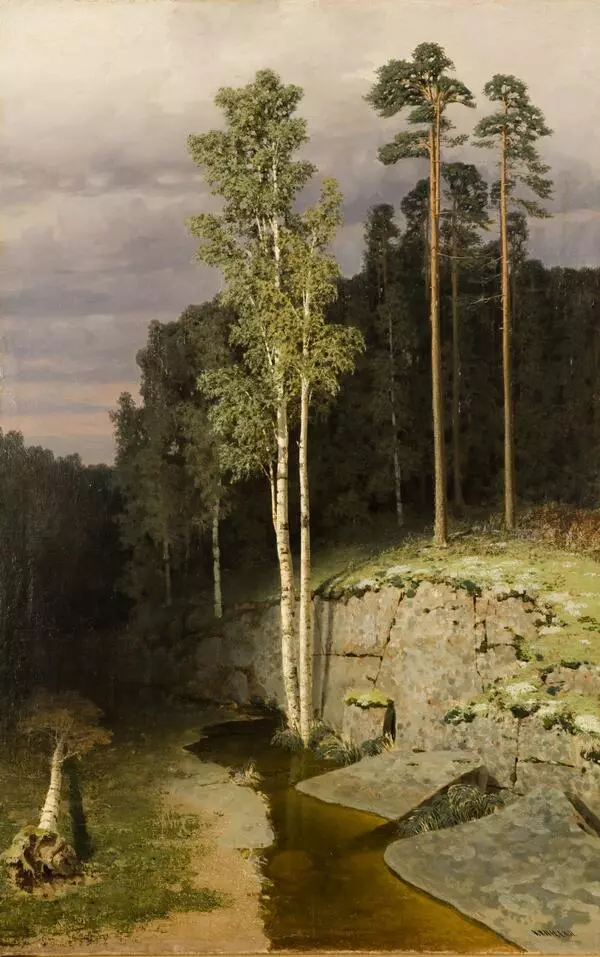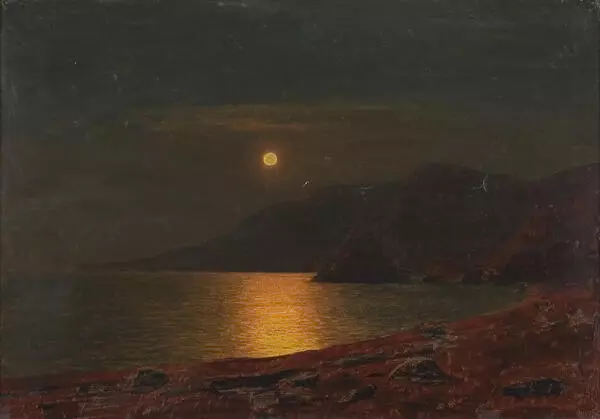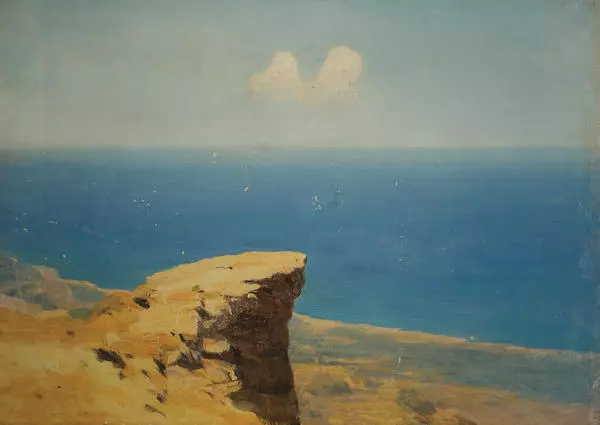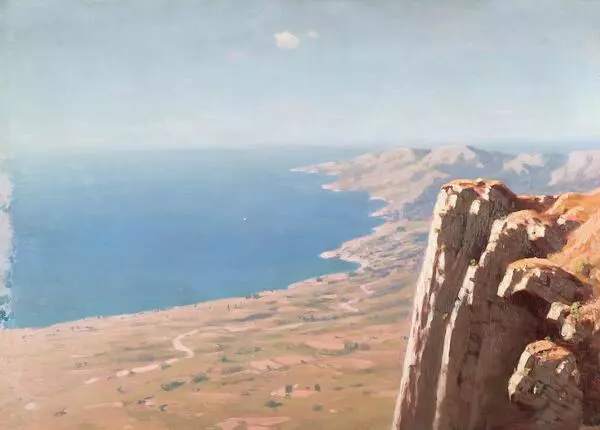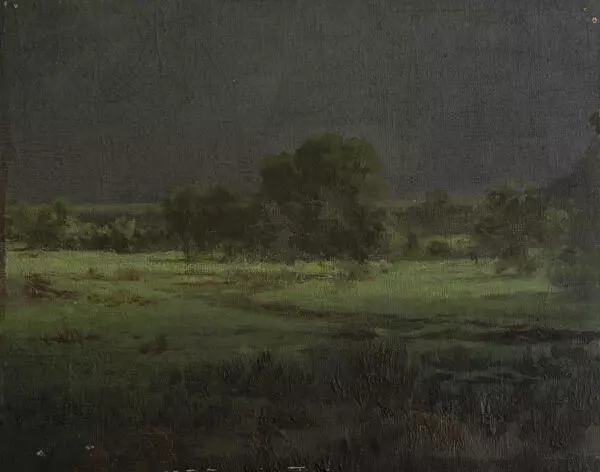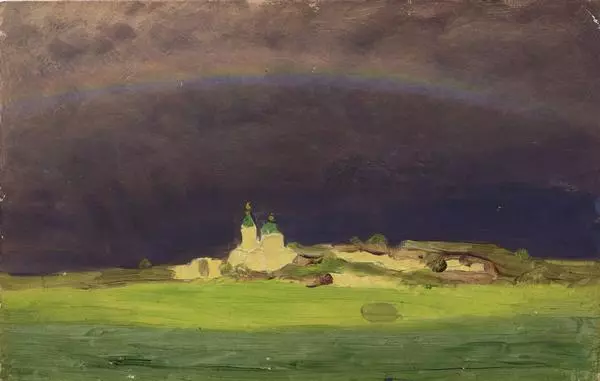Kuindzhi painted ‘Steppe. Crop Field’ in 1875. He portrayed plough land on a summer day and a barefoot girl walking on a dusty road. The painter filled the larger part of the canvas with sky. Kuindzhi often left a low horizon in his landscapes to emphasize the expanse of the sky. In this painting he established himself as a talented landscape artist but did not yet reveal his main gift — creating the effects of luminescence and depth using color and a special technique. Here his manner is still close to the tradition of the Itinerants.
In the 1870’s Kuindzhi took to the ideas of the Association of Itinerant Art Exhibitions. His paintings of that period reflected the creative principles of the group: portraying reality without embellishment. The master joined the Itinerants in 1875 — the year he created “Steppe. Crop Field”. His works were prominent at the exhibitions of the Itinerants, but Arkhip Kuindzhi and the Itinerants quickly parted ways: 4 years later he no longer shared his friends’ views.
Kuindzhi chose his own manner and created a new type of romantic landscape. In his paintings he transformed real places into bright, decorative-theatrical views.
The ‘Moonlit Night on the Dnieper’ brought the artist real acclaim. In October 1880 he showed it in the Society for the Encouragement of Artists. It was the exhibition of one painting. Kuindzhi drew curtains over all the windows in the hall and directed a ray of electric light on the painting. The method emphasized the optical illusion — the moon in the painting seemed to be shining. Contemporaries recollect that ‘the whole of Petersburg’ swarmed the exhibition. People were thrilled and confused: they had never seen anything like that before. Some even looked behind the painting trying to find the source of light.
In the 1870’s Kuindzhi took to the ideas of the Association of Itinerant Art Exhibitions. His paintings of that period reflected the creative principles of the group: portraying reality without embellishment. The master joined the Itinerants in 1875 — the year he created “Steppe. Crop Field”. His works were prominent at the exhibitions of the Itinerants, but Arkhip Kuindzhi and the Itinerants quickly parted ways: 4 years later he no longer shared his friends’ views.
Kuindzhi chose his own manner and created a new type of romantic landscape. In his paintings he transformed real places into bright, decorative-theatrical views.
The ‘Moonlit Night on the Dnieper’ brought the artist real acclaim. In October 1880 he showed it in the Society for the Encouragement of Artists. It was the exhibition of one painting. Kuindzhi drew curtains over all the windows in the hall and directed a ray of electric light on the painting. The method emphasized the optical illusion — the moon in the painting seemed to be shining. Contemporaries recollect that ‘the whole of Petersburg’ swarmed the exhibition. People were thrilled and confused: they had never seen anything like that before. Some even looked behind the painting trying to find the source of light.
